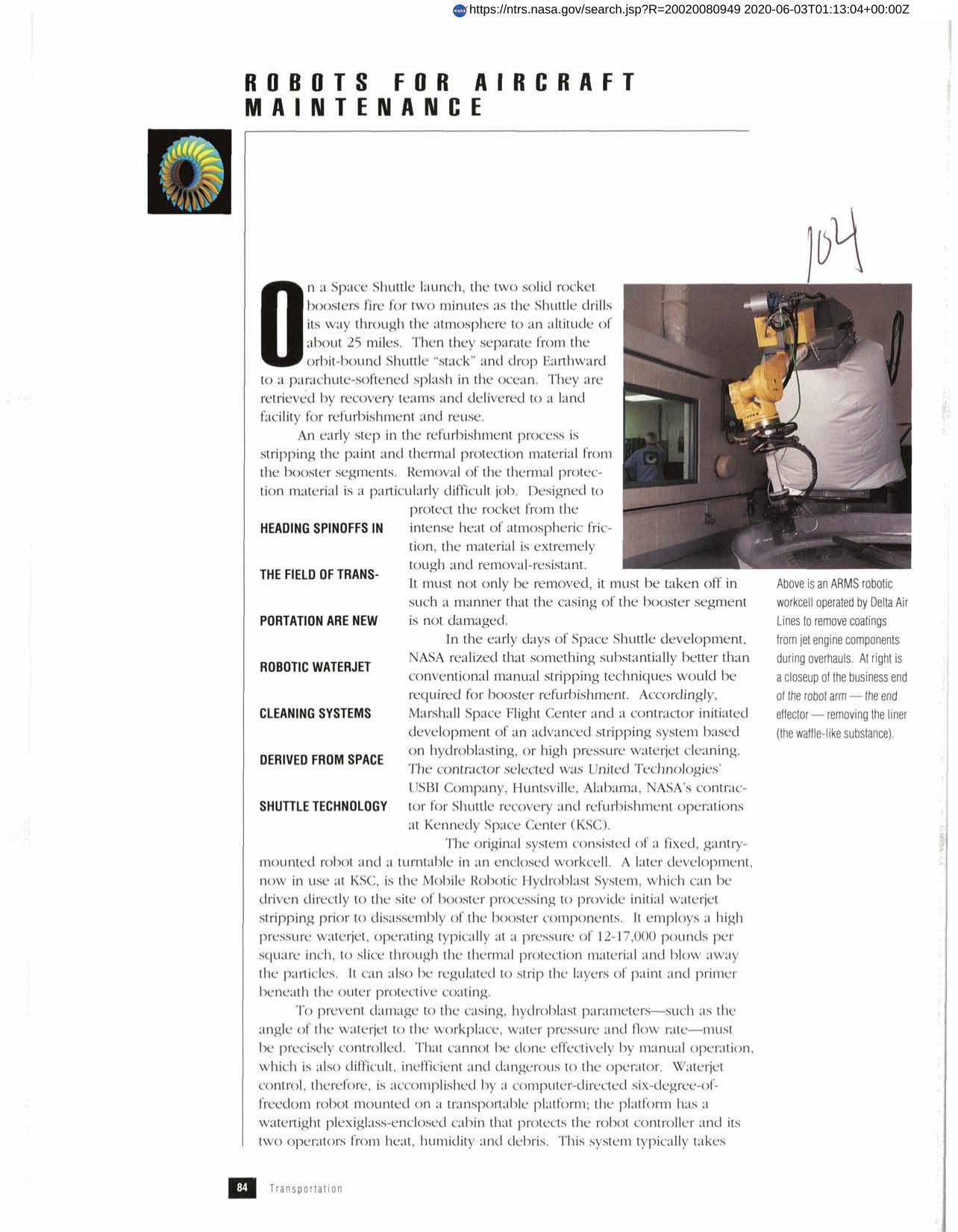
Robots for Aircraft Maintenance
Marshall Space Flight Center charged USBI (now Pratt & Whitney) with the task of developing an advanced stripping system based on hydroblasting to strip paint and thermal protection material from Space Shuttle solid rocket boosters. A robot, mounted on a transportable platform, controls the waterjet angle, water pressure and flow rate. This technology, now known as ARMS, has found commercial applications in the removal of coatings from jet engine components. The system is significantly faster than manual procedures and uses only minimal labor. Because the amount of substrate" lost is minimal the life of the component is extended. The need for toxic chemicals is reduced as is waste disposal and human protection equipment. Users of the ARMS work cell include Delta Air Lines and the Air Force which later contracted with USBI for development of a Large Aircraft Paint Stripping system (LARPS). LARPS' advantages are similar to ARMS and it has enormous potential in military and civil aircraft maintenance. The technology may also be adapted to aircraft painting aircraft inspection techniques and paint stripping of large objects like ships and railcars."
Full article: http://hdl.handle.net/hdl:2060/20020080949

Robots for Aircraft Maintenance

Robots for Aircraft Maintenance













